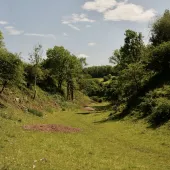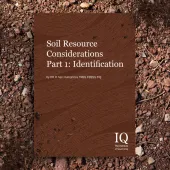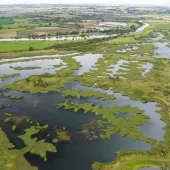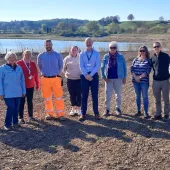New Environment Agency Guidance on Waste Recovery
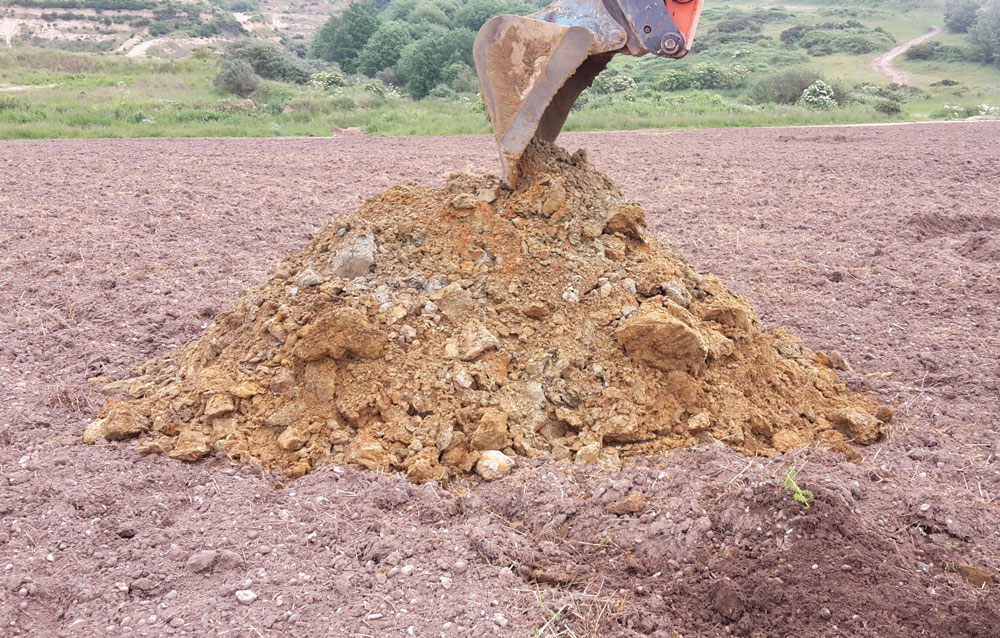
First published in the August 2017 issue of Quarry Management as Recovery vs Disposal
What does the new guidance mean for the waste and extractive industries?
By Chris Berryman, senior consultant, ESI Consulting
The sustainable reuse of waste soil materials plays an important role in the restoration of quarry workings and brownfield redevelopment, allowing sites to be restored in accordance with planning requirements and providing new opportunities for previously derelict land.
Waste soil materials may arise from a large range of sources including major engineering, infrastructure and development projects similar to Crossrail and HS2, and the processing of construction and demolition materials.
These materials are considered ‘waste’ under the European Union Waste Framework Directive (2008/98/EC), which provides the legislative framework for waste management.
Waste recovery or disposal?
Waste disposal operations are about managing waste in a safe and environmentally sound manner. In the context of the disposal of wastes on land, such activities are considered to be ‘landfill’ and regulated under the requirements of the Landfill Directive (99/31/EC).
Waste recovery operations are about using waste to replace other non-waste materials to achieve a beneficial outcome in an environmentally sound manner. A recovery approach will preserve virgin materials which may otherwise be used, thereby conserving natural resources, also a preferable method with respect to the waste hierarcy.
The UK regulatory position
For more than a decade the Environment Agency (EA) based its decision-making on waste recovery to land through five tests detailed in EA guidance RGN13 ‘Defining Waste Recovery: Permanent Deposit of Waste on Land’1:
- Is there a clear benefit from the activity?
- Is the recovered waste material suitable for its intended use?
- Is the minimum amount of waste being used to achieve the intended benefit?
- Is the waste being used as a substitute for a non-waste material?
- Will the proposal be completed to an appropriate standard?
In November 2015, the Methley Quarry Court of Appeal judgement2 challenged the EA’s established waste recovery guidance. The appeal found in favour of the appellant (Tarmac), overturning the EA’s original recovery decision and subsequent Planning Inspectorate decision. The appeal judgement instructed the EA to grant a recovery permit for restoration of the site, agreeing with the appellant that planning consent obligations should be the primary consideration in whether a recovery permit should be granted.
The judgement led to 12 months of uncertainty for the waste and quarry sectors while the EA considered the implications. In October 2016 the EA finally quietly released new guidance3, but the question remains as to whether it now provides an opportunity or hindrance for the waste and quarry industry?
In the new guidance4, the focus is now on the ‘substitution test’. The main push is to demonstrate that if waste material could not be used, then the applicant would do the work to get the same outcome using non-waste materials.
The guidance now provides three new tests to demonstrate the ‘substitution test’:
- Evidence of financial gain by using non-waste materials;
- Evidence that funding has been secured to cover the expected cost of the work using non-waste; or
- Evidence that there is an obligation to do the work, for example being required by a planning condition to restore the land according to an approved plan.
It is ESI Consulting’s belief that, in most cases, the third test will be the likely route to demonstrate recovery, however, there may be instances where project economics can demonstrate the other ‘financial’ tests.
Waste Recovery Plans
The case for recovery needs to be presented to the EA by means of a Waste Recovery Plan (WRP), in which an operator or applicant should demonstrate that one of these tests can be met. The new EA guidance also defines additional technical requirements to be considered in support of a WRP and Environmental Permit application.
Natural Resources Wales (NRW) has also adopted the new EA guidance and ESI understands that the Scottish Environmental Protection Agency (SEPA) is actively considering whether to revise its recovery guidance.
In practice
Since the Court of Appeal judgement and publication of the new EA guidance, ESI have managed a number of successful Recovery Permit applications, securing favourable recovery decisions based on both the ‘obligation’ and ‘financial’ tests.
The ‘financial’ test
Orsett Quarry is a dormant sand and gravel quarry in Essex, with an extant ROMP consent for continued mineral extraction and restoration. During its dormancy, sensitive habitats and protected species have established which require relocation to allow quarry operations to recommence. An adjacent area within the wider landholding was identified for the creation of an ecological park. Inert waste soils were to be used to engineer a suitable landform, to support habitat and species relocation.
A case for recovery was made to the EA, based on the financial viability of the wider quarry scheme. The case demonstrated that ™ that could otherwise not be extracted.
The ‘obligation’ test
In ESI’s opinion, it is critical that any new planning consents for possible recovery schemes are worded in an appropriate manner to avoid the pitfall of committing to disposal, rather than waste recovery. The case for recovery should be considered from the very start of the planning process.
The consultancy is currently supporting several clients in the early planning stages with recovery schemes, which require anything from a few tens of thousands of cubic metres to tens of million cubic metres. It is notable that the new guidance no longer places any arbitrary or inferred limits on the volumes of waste that can be deposited under a Recovery Permit.
This is of considerable importance to the quarrying sector when considering whether to restore a site to either a low- or high-level restoration scheme, as it effectively opens the door for any new quarry to be restored to a high level as a recovery activity in the future.
If a quarry can be restored as recovery, the politically emotive terms ‘landfill’ and ‘disposal’ do not apply, presenting a real opportunity when it comes to considering local minerals and waste plans. Furthermore, there is no landfill tax burden associated with recovery, which further enhances the commercial opportunity. Waste producers, too, will often have contractual or strategic drivers to divert waste from landfill towards recovery, making recovery more commercially attractive.
In ESI’s experience, sites with existing planning consents can present a challenge, as it often assumes the use of waste alone and may frequently refer to terms such as ‘disposal’ and ‘landfill’. This precludes the opportunity to demonstrate that non-waste materials could be used or that recovery has been considered, and so the substitution test cannot be demonstrated.
However, for sites where existing planning presents a challenge to recovery, there are still ways a case can be made based on the ‘obligation’ test. This may be through Section 106 agreements with relevant stakeholders, including the local planning authority, to provide a legal requirement for a scheme to be completed regardless of whether waste or non-waste materials can be used. Alternatively, written confirmation from a planning authority may suffice to confirm that the planning authority would be willing to see either waste or non-waste used. In these instances, dialogue and engagement with the local planning authority may deliver the required result without the need for a major amendment or variation to existing planning.
Conclusion
In ESI’s recent experience the new recovery guidance has offered real opportunities to both the quarry and the waste sectors, providing a mechanism by which mineral and brownfield site restoration can be pursued, without the challenges of disposal and landfill.
The consultancy understands that since publication of the new guidance, the EA is now receiving notably fewer Recovery Permit applications. ESI’s impression is that this is largely due to a lack of understanding by industry, including operators, planners and consultants.
This may be as a result of the lack of public consultation and engagement from the EA following the Court of Appeal judgement and the low-key release of the new recovery guidance. ESI have also found that the detail of the new guidance is yet to be fully understood by many local planning authorities. It is, therefore, incumbent on practitioners in this particular field to disseminate the new recovery guidance and inform the wider planning sector.
With the circular economy and waste hierarchy promoting recovery over disposal, the new regulatory position on the deposit of waste to land offers real commercial and environmental opportunities. QM
REFERENCES
- Environment Agency, 2010. Regulatory Guidance Series document No. EPR 13. Defining Waste Recovery: Permanent Deposit of Waste on Land (Version 1.0, March 2010).
- Tarmac Aggregates Ltd, R (on the application of) v The Secretary of State for Environment, Food and Rural Affairs & Anor [2015] EWCA Civ 1149 (17 November 2015)
- Environment Agency, 2016. Waste recovery plans and permits. Available online at www.gov.uk/guidance/waste-recovery-plans-and-permits (Environment Agency, 2016).
- Environment Agency, 2016. Waste recovery plans and permits. Available online at www.gov.uk/guidance/waste-recovery-plans-and-permits (Environment Agency, 2016).
About the author: Chris Berryman is a senior consultant at ESI, a hydrogeologist and former Secretary to the Geological Society’s North West Regional Group. Closely involved in the development of the new Environment Agency guidance on waste recovery, he currently leads ESI’s waste permitting and waste recovery capability and sits on the Environment Agency’s Landfill Regulation Group Inert Waste Sub Group and the Mineral Products Association (MPA) Waste Working Group.
- Subscribe to Quarry Management, the monthly journal for the mineral products industry, to read articles before they appear on Agg-Net.com



